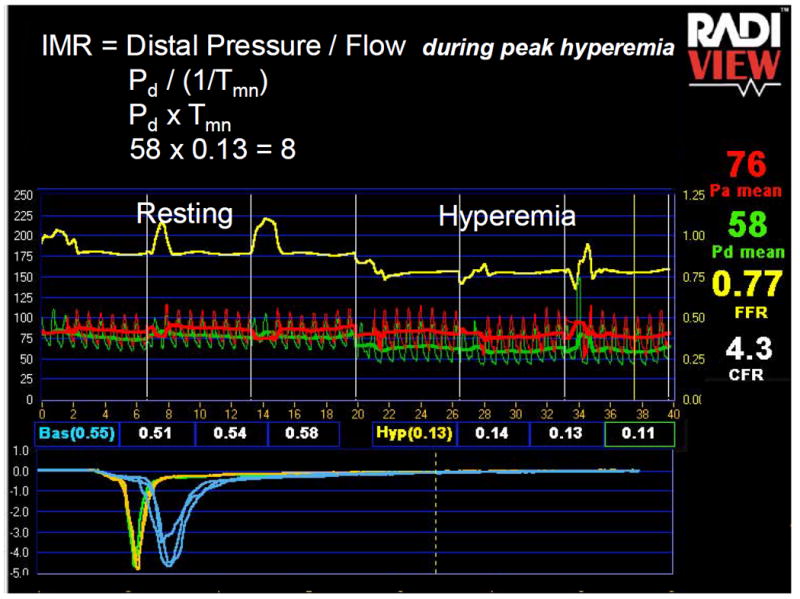Figure 1.

Example of FFR, CFR and IMR Measurement
In this example of a patient one year out from HT, the FFR in the left anterior descending artery is very abnormal at 0.77 (distal pressure, 58 mmHg divided by aortic pressure, 76mmHg), despite an angiographically normal appearing vessel. IVUS revealed moderate diffuse intimal thickening with a % plaque volume of 33%. CFR is calculated by dividing the resting mean transit time (0.55 seconds) by the hyperemic mean transit time (0.13 seconds), both of which are derived from averaging 3 transit times calculated from the thermodilution curves created by saline injection. The CFR is 4.3 which would usually be considered normal, but the low FFR suggests that the normal CFR in this patient was likely once higher. IMR is calculated as described in the figure by multiplying the hyperemic distal pressure (58 mmHg) by the hyperemic mean transit time (0.13 seconds) and was very low at 8 units, suggesting normal microvascular function.
